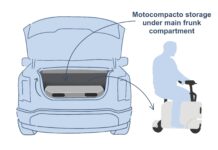By Industrial Heating | May 31, 2011
https://www.industrialheating.com/articles/90085-the-titanic—a-study-in-metal-failure?
“The construction used wrought-iron rivets to attach steel plates to each other or to a steel frame. The frame was held together with similar rivets. Each rivet was heated well into the austenite temperature region, inserted into the mated holes and hydraulically squeezed to fill the holes and form a head. Three million rivets were used in the construction of the Titanic.”
… researchers obtained steel from the hull for metallurgical analysis. Chemical analysis showed a very low nitrogen content, which meant that the steel was not made by the Bessemer process. It was instead a product of the open-hearth process, and it was likely manufactured in Glasgow, Scotland. Low silicon, high oxygen and high sulfur in the steel indicate that it was only partially deoxidized, or semikilled. This, in addition to the low manganese content – creating a low Mn:S ratio – has a tendency to embrittle steel at low temperatures.
…. Had the steel not been so brittle at the operating temperatures, however, the fate of many of its passengers might have been different. We will never know. What we do know is that thermal processing of material affects us in ways we may not be aware.”
Mitch: This article really stuck out to me because of the inherent metallurgical concerns involved with designing metal parts. Often we take metal for granted assuming its all simply a homogenous material with set properties but in truth it’s an extremely dynamic and versatile material which deserves a healthy respect and careful utilization. From a design standpoint because of the techniques, materials, and heat treating involved “more than 1,500 people lost their lives” (Industrial Heat). This is a sobering fact as most firefighting tools, critical to save both firefighters and civilians, are made of various metal alloys and heat treatments. The high temperature environments in which these tools operate can have a great effect on the heat treatment and resultant performance of the tools. One example would be if a tool was lost in a fire and later recovered, the heat treatment would have been ruined, and though there would be no visual indication, the material properties of the tool would have been changed. As I design something for this field, where lives will be on the line, I must take a lesson from the failures of the Titanic designers to truly consider the material properties involved.




